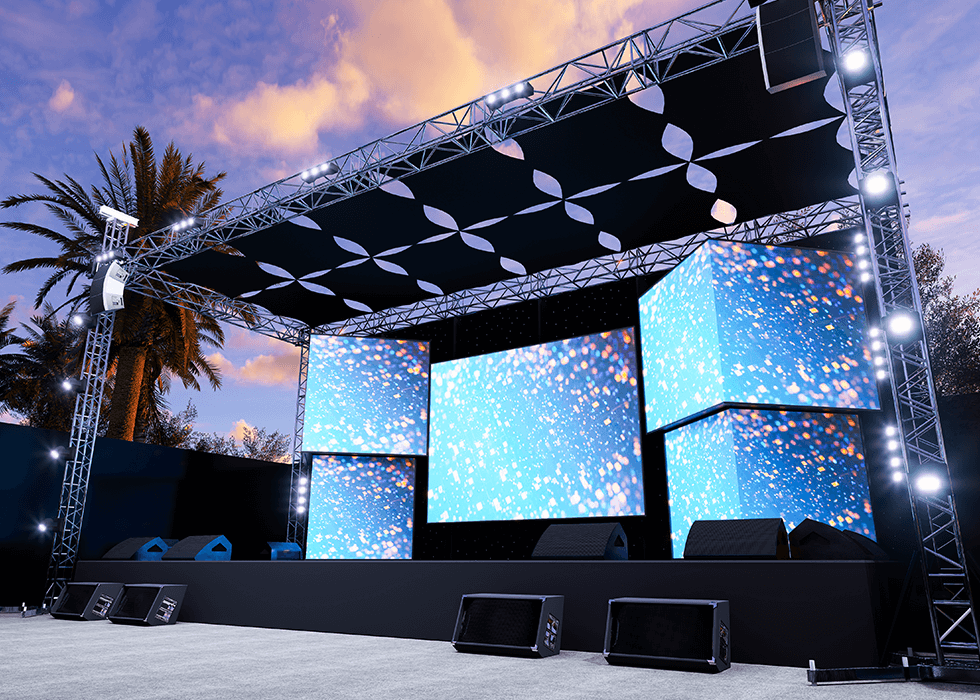News & Trends
Five Essential Tips for Virtual Production Success
Technological advancements have paved the way for groundbreaking innovations in video production, with Virtual Production (VP) taking center stage. With near-limitless possibilities to transform filmmaking, VP is a game-changer for filmmakers seeking more innovative methods of creative expression and visual storytelling.
OK, for the uninitiated, let's define virtual production.
What is Virtual Production?
Virtual production uses computer-generated imagery (CGI), motion capture, augmented reality, and other extended reality technologies to create realistic sets and environments. This eliminates the need for physical sets, props, and costumes, reducing costs and time and allowing filmmakers to create believable shots quickly. It also allows filmmakers to change a scene in real time and adjust a shot or whole production quickly.
With these five tips, filmmakers can maximize Virtual Production's potential and deliver immersive cinematic experiences that capture audiences.
Collaboration and Communication for Virtual Production
Effective collaboration is paramount in Virtual Production, and the immersive nature of the technologies involved can further enhance it. Clear and open communication among the production team fosters a shared understanding of the artistic vision. This enables a cohesive approach towards achieving desired outcomes on set.
A collaborative environment ensures everyone aligns with the creative vision. This is done by leveraging each individual's expertise to bring cinematic scenes to life. In addition, it maintains a clear pathway to achieving the desired results.
The 'Wow' Factor of Real-Time Rendering in Virtual Production
Gone are the days when producers had to wait hours to see a completed scene. Real-time rendering is VP's secret weapon, a pivotal process that allows filmmakers to see immediate visual results during production. Real-time rendering lets filmmakers visualize their scenes and make adjustments quickly, rather than waiting for the final version to be rendered. This allows them to experiment with different camera angles and lighting effects and change the sets and props without re-rendering the entire film. This component empowers actors to respond to and interact with virtual elements on the screen, enabling producers to experiment with lighting and effects, leading to dynamic and impactful shots.
No longer constrained by post-production processes, real-time rendering revolutionizes the filmmaking process, providing immediate visual feedback that enhances creativity and planning during filming.
Integrating the Real with the Virtual
By combining virtual components with physical sets and props, Virtual Production allows a seamless blend that enhances visual storytelling and adds depth and realism to shots. This contributes to integrating physical and virtual elements to create captivating cinematic scenes.
Mastering Lighting and Cinematography in Virtual Production
Lighting and cinematography are pivotal considerations in Virtual Production, presenting unique challenges that require meticulous attention to detail. Achieving the desired aesthetic on camera while working with virtual elements demands careful calibration of lighting settings and color grading.
By optimizing exposure levels and utilizing post-processing tools, filmmakers can ensure a harmonious blend between physical and virtual elements, creating a unified visual experience that captivates audiences with its immersive allure.
Embracing Iterative Workflow and Flexibility
Implementing an iterative workflow is one of the most significant aspects of Virtual Production. This is because it allows filmmakers to refine their ideas, make necessary adjustments, and continuously enhance their projects as they move along. Maintaining a disciplined approach to workflow management and integrating flexibility into the production process enables filmmakers to adapt to evolving creative requirements.
Additionally, allocating sufficient time for tech rehearsals and refining critical moments ensures filmmakers have the flexibility and control to bring their creative vision to fruition.
Virtual production is transforming the film industry, offering unparalleled creative expression and visual storytelling opportunities. Virtual production is a powerful tool for creating realistic visuals, but it's imperative to use it responsibly. Filmmakers should also focus on creating engaging and emotionally compelling narratives.














